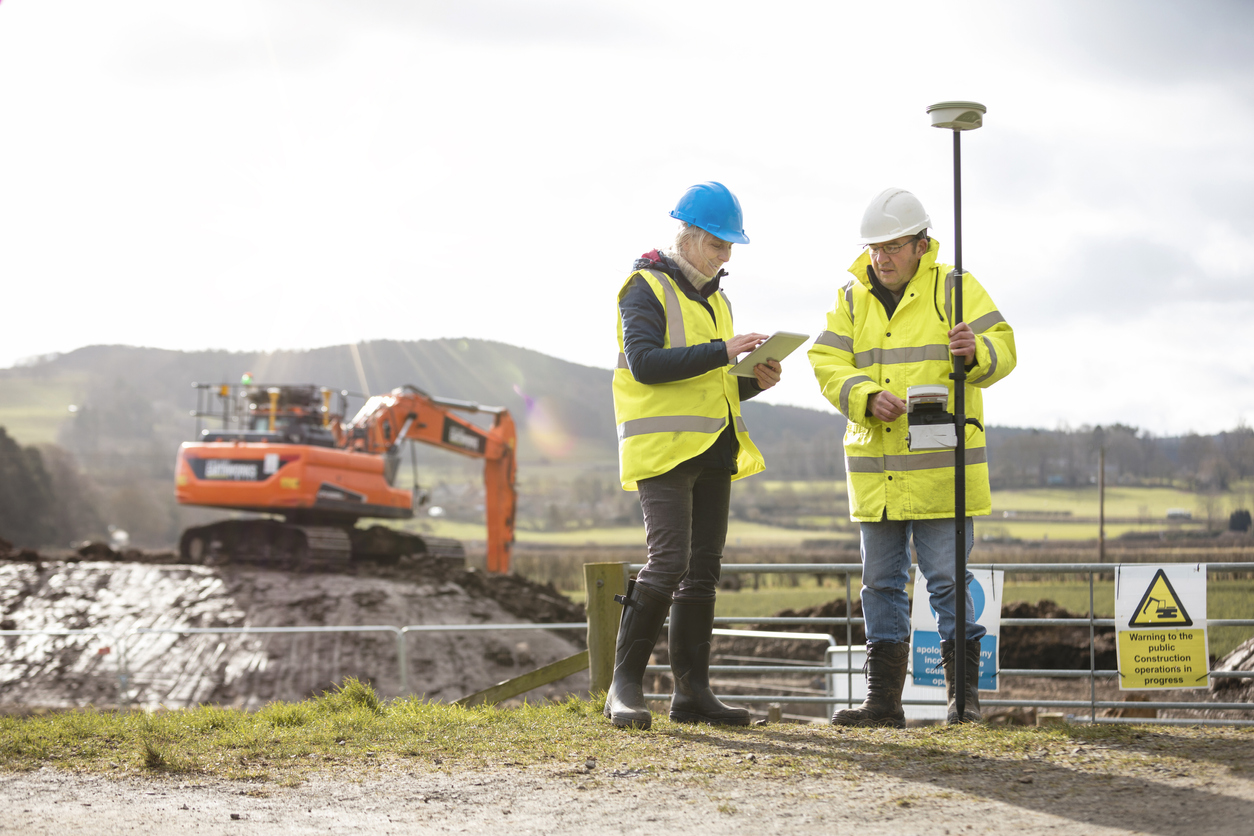95% of IT and engineering leaders say their organisations now prioritise process and workflow automation, according to a Salesforce report.
This figure shows the construction industry where opportunities for rapid improvements lie.
You could attribute this shift to the fast ROI that digitisation delivers.
Companies measure this ROI in several ways, with the Salesforce report saying the top three are:
- Employee time savings
- Faster operations
- Cost savings
Construction can get in on the action (plenty of companies are) and enjoy this same ROI by converting manual processes into digital workflows.
Customisable mobile forms are one the best ways to quickly convert many manual processes, taking your workflows to another (digital) level.
What are customisable mobile forms?
At their simplest, customisable mobile forms let your field teams collect data on their mobile devices, then upload it into the cloud and onto a platform. They can save images, GPS locations and signatures on the move – even when offline.
‘Customisable’ comes into play with the form builder, where you can convert any paper-based process into a mobile form, with ease and without code. Either create them from scratch with custom form fields or edit existing forms with form automation. Your mobile forms can help to ensure nothing gets missed with a straightforward experience.
Get the data you need, immediately
Would your team benefit more from using paper forms or mobile forms to record data?
Both let your team capture data wherever and whatever they are doing. But the similarities end there. Once collected, there are a number of questions.
- What happens to the data?
- Where does the data go?
- How do you judge data accuracy?
- How many steps between data collection and the office receiving it?
- How much analysis is needed to produce insights?
- What reporting capabilities do you have?
Here are two real-life scenarios with semi-fictional character Ellie, who works at your company in the field, inspecting onsite assets. Please note, these examples are specific to inspecting onsite assets, but the theory could be applied to any use case - as Hanson Contracting found out.
The first is how things usually work now, and the second is how they will look after adopting customisable mobile forms
1) Using paper forms and checklists
Ellie opens her notebook and scans for the next asset. She finds it, pulls out her phone and loads Google Maps. After strolling around, she finds the location and follows the directions until reaching it.
Ellies inspects the asset, running down a paper-based checklist. She spots some pretty big issues that require immediate attention. After jotting them down on her notepad and taking pictures, she inspects a few more assets before heading back to the office to write the report.
Spending a couple of hours typing her notes into a spreadsheet, Ellie realises she forgot to answer two questions on the paper checklist. Too late now. Ellies fires over the report to you by email.
Once opening the incomplete report, you spend a couple of hours analysing the available data before rekeying the data into your asset management system.
2) Using mobile devices
Ellie loads the mobile workforce management app on her device - this time, it's her mobile phone. It tells the exact asset location the fastest route to get there.
Once at the asset, she finds the same pretty big issues, but this time, she records them on the app's mobile form. She checks the asset history and finds it is a common issue. After taking pictures and notes, Ellie saves them on the app and clicks submit, but it stops her from progressing. She missed two questions that she quickly corrects and sends the report.
The completed digital workflow triggers an automated email to you. You see an attachment and open it. It is a comprehensive report detailing everything Ellie has done that day and the actions you need to take – the analysis is already done.
No need to spend hours rekeying the data into your asset management system as the app auto-uploaded it for you.
While the jump to digital may seem overwhelming, you can see the upsides just by looking at your own and your construction team’s daily experiences. It's a simple example, but the use cases for digital workflows and mobile forms at you business are almost endless.
Create your own forms, standardise data collection
As the pile of paperwork grows, so does human error.
Moving between filling out documents to collecting the data to rekeying multiple times is a tinderbox waiting to ignite.
In the manufacturing industry, 37% of professionals do not act on company data because they cannot trust its accuracy. You can imagine a similar sentiment within the construction industry.
Customisable mobile forms are a fantastic tool for collecting and capturing data at the source, no matter where your team works. Your workforce collects data in structured formats using a mobile app, making workflows like these easier to manage:
- Analysis
- Reviewing
- Collaborating
- Acting on the latest data
Swapping clipboards for customisable mobile forms will enhance quality, efficiency and effectiveness.
No more trips back to the office to lose hours typing up notes and analysing data.
You can even create digital workflows that pre-fill forms with the most accurate and relevant information. That way, workers have everything they need, miss nothing and only submit complete data.
Up your reporting game with real-time data flows
Communication is a fundamental issue in construction. Mainly because the tools relied on are no match for construction’s fragmented nature. Creating lines of communication between teams are crucial to project success.
Consistent reporting with mobile forms can make the difference here.
Everyone ‘singing from the same hymn sheet’ with access to the same data leads to acting in a joined-up fashion. People feel more involved when they understand the why behind their actions. If anything goes wrong, you will work together to solve the problem.
Mobile forms can drastically improve reporting through real-time information flows, providing you with complete transparency and helping you keep projects moving smoothly while preventing avoidable delays in your operations.
Give your construction team the customisable mobile forms they need
Technology makes our working lives easier. Customisable mobile forms falls nicely into this category. More than that, the results they give you will increase the cost-effectiveness of your business.
It starts with handing time back to employees, who then focus on jobs that deliver more value to the business – making them happier and more productive.
Instead of wasting time on paperwork, spreadsheets, and manual reports, they click a few buttons, fill out digital forms, and then put the device away, knowing the job went well.
The trust in your data, its completeness, and the automated analysis that customisable dashboards allows will transform your results.
The ROI is not only immediate; it is almost limitless as it filters into every part of your business.
Want to learn more about this software?
Check out our mobile workforce management solution - Causeway Ermeo
-level.jpg?width=1600&height=1000&name=How-customisable-mobile-forms-take-your-workflows-to-another-(digital)-level.jpg)


